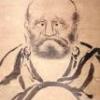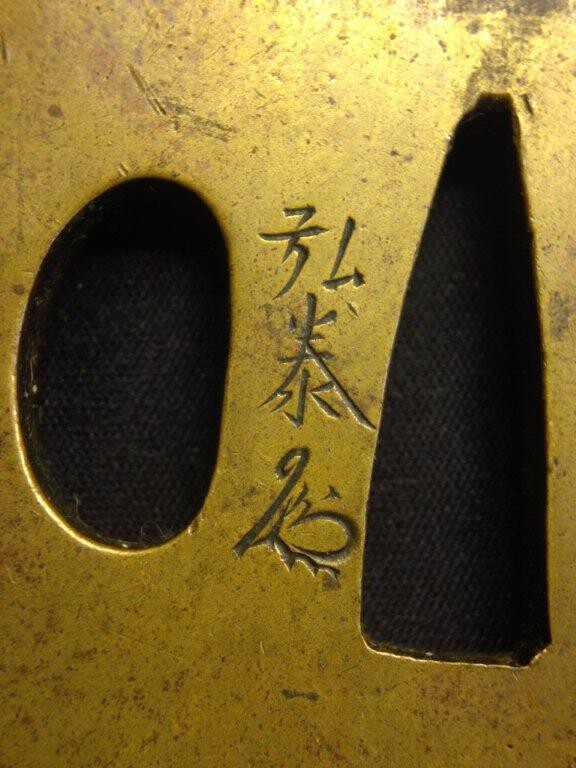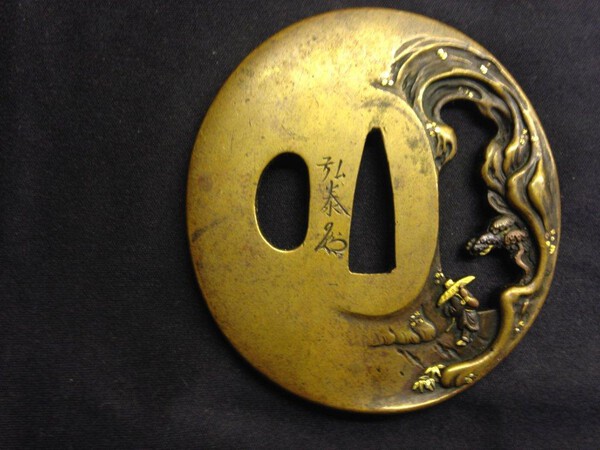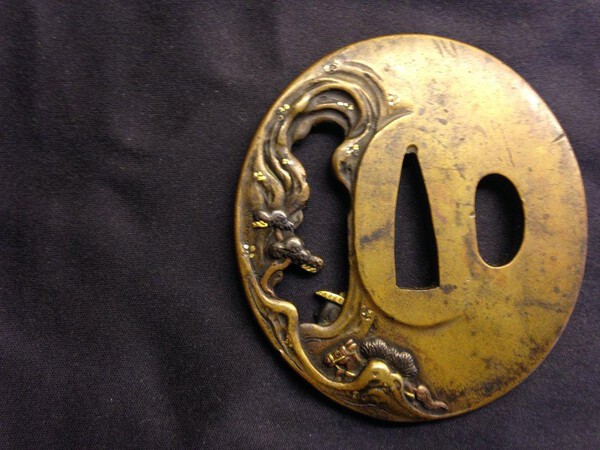-
Posts
2,770 -
Joined
-
Last visited
-
Days Won
11
Content Type
Profiles
Forums
Events
Store
Downloads
Gallery
Everything posted by Shugyosha
-
Hi Tobias, You might be interested in this series of articles where Tsuruta san of Aoi Art undertakes the renovation of a badly out of polish sword. The third one includes the creation of a window to view the hataraki in the blade. http://www.aoijapan.com/info/page/2 Kind regards, John
-
Hi Steve, I think that the kuni is Hishu (肥州) rather than Kishu (紀州) so a choice of Higo or Hizen rather than Kii for the province of manufacture. Hawleys has some possible candidates working in Hizen during the Edo period, none in Higo: HIR 367: Signing Hizen Kuni Ju Nin Fujiwara Hirosada (1st Generation) working around 1615 HIR 368: Signing Hizen Kuni Ju Hirosada (2nd Generation, son of Kanehiro, good suguba) working around 1684 HIR 364: Signing Hizen Kuni Ju Hirosada (son of Hirosada, presumably the one above) working around 1716. The first generation gets 20 points and the others 15 so average skill level. My guess would be one of the later generations as the sword looks to have the kanbun sugata. Best, John
-
Dear All, Apologies if this is widely known, but the above collection is available to view on line and might be of interest to those researching their tsuba: http://jameelcentre.ashmolean.org/collection/7/10237/10338 Kind regards, John
-
Hi Bruno and Christian, Many thanks for your replies. I agree, the mei doesn't seem to match, but I've exhausted my reference material as far as comparisons are concerned. Christian - it's not exactly to my taste either: it's a bit too twee hence it's an easy candidate to move on as one of those examples that isn't in keeping with where I see the rest of my collection going. Thanks once more, John
-
Gentlemen, I am planning to offer this tsuba for sale on the Board but thought that I would throw it open for comment before I do, not least of all so that I don't misdescribe it. This is an oval sentoku tsuba 70mm x 65mm x 4mm signed Hiroyoshi with kao. Haynes (H 01449.0) has a Hiroyoshi working in Mito signing with these kanji but the kao does not match any of those listed with this entry in Haynes. This gentleman has work dated to 1841-1842. The theme is that of a man leading a donkey through a mountain landscape. There is a similar design here, but I haven't been able to tie it down precisely: https://www.scholarsresource.com/browse/artist/2142569414?page=5 Any comments on the quality of workmanship or the theme? Many thanks, John
-
Thanks to Paul and Mariusz, you are both very kind. Best, John
-
From the sugata I'm guessing Keicho shinto. Shinshinto might be another possibility but I think the patina on the tang and the hada is inconsistent with this. I read somewhere the these outsize blades were carried by sumo wrestlers who made a normal sized blade look ridiculously small but that might be apocryphal. In any case a very nice blade. Best, John
-
What Guido said. There's always the same typo from item to item "midair" for "midari".
-
Hi Gwyn, Thank you very much for the kind words - I hope that you enjoy your new sword. I've also had a good recent experience dealing with Peter, so I'll take the opportunity to second what you've said about him. Best regards, John
-
It looks like the nioi guchi falls off the edge of the blade in places. I know this isn't unusual with Muramasa's swords but is it a sufficient negative point for the shinsa team to give it Hozon rather than TH papers? Best, John
-
I may have it wrong but I thought this sword had been sold off the Board recently?
-
Hi Axel, The part you aren't sure of is the blade's sori and the kanji that looks like that for ten is "sun". I think the signature on the blade and Torokusho match but the cursive script on the paper makes it hard to read. Best, John
-
Jean, You're absolutely right. Apologies Brett - go with what Jean said. Best, John
-
I agree with Stephen - a great plan, well executed. I wish I had a similar direction for my own collecting. Best, John
-
Hi Brett, I'm not 100% sure about the short one due to the placement of the mekugi ana next to the first kanji but I think it reads Masa Kuni. The longer mei, I believe, reads Dewa Daijo Fujiwara Kunimichi. Again I'm finding the last kanji on the tang hard to read but the one on the Toroku sho is this version of michi 路. Kind regards, John
-
Hi Joel, Here's a link to a Hizen sword from a little later than yours - Kanbun era started in 1663 or thereabouts so you can see the difference in the patina on the tang on this sword and on yours. http://www.aoijapan.com/katana-hizen-ju-harima-no-kami-fujiwara-tadakuni Unfortunately, I think it's not so much that it is an older blade but that it has had a harder life. A couple of other things to note, the end of the tang on your sword is a different shape to the example, but that might be that it has been shortened (an unshortened katana of this period would normally*be 70cm ish) and for a katana from Hizen you would normally* expect the signature to be on the side facing towards the wearer if worn through the sash on left hip, edge upwards. * Unfortunately with Japanese swords there are some rules and usually many exceptions to them, so this may not mean that it is cut and dried. All that said, it looks like you have a geniune Japanese sword. I'm going to let Jean and Stephen take this on for now as my bed is calling. Kind regards, John
-
Dear Mr Piffle, I think that you are going to have to post some pictures of the full blade to get anything of use to you: it's not really possible to say too much without more, other than the tang of this blade is overly rusty for the time period and that the signature is unintelligible so no way really of knowing whether it is genuine from the pictures posted. Also, there is a board rule about signing with your personal name rather than your handle (had I known this when I started I would have chosen something different than mine). Otherwise, welcome to the forum and I hope you enjoy it - it is a great place to learn some interesting stuff. Kind regards, John
-

Bizen Kozori Moriyasu O-Tanto, Nambokucho, Cheap
Shugyosha replied to Marius's topic in For Sale or Trade
Sorry Dirk, it was someone else...you've gotta move fast to catch one of Mariusz's tarts. Congratulations to whoever bought it - an interesting sword at a cracking price. Best regards, John -

Bizen Kozori Moriyasu O-Tanto, Nambokucho, Cheap
Shugyosha replied to Marius's topic in For Sale or Trade
Hi Mariusz, PM sent. Best, John -
According to the Nihonto compendium in the research section above, this is the only smith with the title Yamato kami signing Kanenobu, so if everyone has guessed rightly (no disrespect intended) it has a pretty good chance of being correct. A 15 point rating from Hawley indicates, I believe, average skill but it isn't always cut and dried. Have a look at this article on sword smith ratings: http://nihonto.ca/ratings.html Kind regards,
-
According to the kanji pages, only Yamato and Ousumi provinces begin with the kanji 大. So that might give you a clue as to the province but I got rather less than Peter so unless and until you can get a better photo... Best, John
-

A Suishinshi Katana 1770/80's
Shugyosha replied to Tai's topic in General Nihonto Related Discussion
It's not so much the absence of the stamp - it might have been there originally before the blade was shortened, but that the kanji are written in a completely different style. Also, what I do find a little odd is the four kanji above the mei 秋方家臣 - I would expect the second kanji to be 元 giving Akimoto kashin (a retainer of the Akimoto) for whom he was working from 1774. As it is written, these kanji don't make any sense to me (Akikata kashin) and it would seem odd that a swordsmith working for a particular clan would misspell the clan name, but, I too am learning and usually get these things corrected by those that know better. Best regards, John -
Unless I really am going senile, I'm pretty sure that this sword has discussed on the board recently...but I can't turn up the link right now... Some clearer pictures of the jigane might help, but I think I see sumigane near the boshi which might be a pointer towards a real hizen blade...but anyways, it certainly seems to be something more than a wartime blade. Best, John
-
Hi Chris, I've had a quick look at Hawley's which lists a couple of Yoshiharu's using the kanji on your sword: one in Hoki and the other in Yamashiro, so no obvious connection to Mino there also a quick look through Malcolm Cox's book on Mino To doesn't (obviously) reveal any smiths signing with this mei. As Steve says, the signature does look dodgy but if someone is going to execute a gimei my bet would be that they would pick a famous name rather than one few people have heard of and maybe choose someone who could use a chisel to cut it, so it may be a smith that has escaped the meikan. You could try posting some more pictures of the blade to see if that yields some further information... Best, John
-

Oriental Museum Venice
Shugyosha replied to tony edmunds's topic in General Nihonto Related Discussion
I visited the Stibbert museum last year but was only able to look at what was on display publicly. It is possible to book a private viewing of the Japanese collection but I found this out too late to avail myself of it. Also the collection in general is well worth a look - they have a company of armoured men at arms marching through one hall led by a knight on horseback. Also, they let the public dress up in some of the less valuable pieces of armour: I have a photograph of myself wearing a barbuta and a smaller child than myself was running around in a mail shirt. Well worth a visit.





